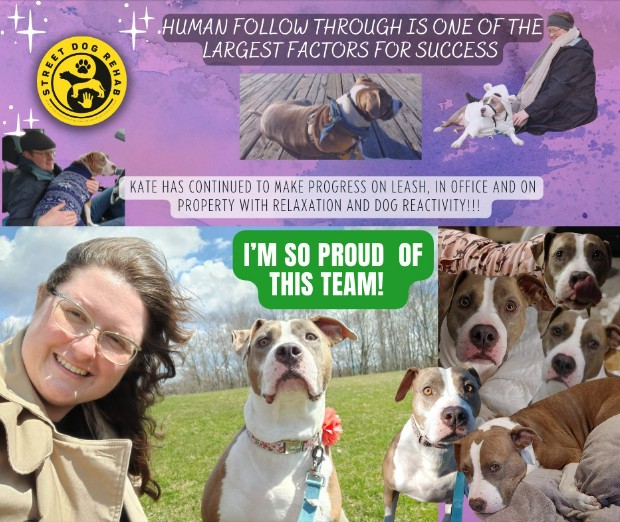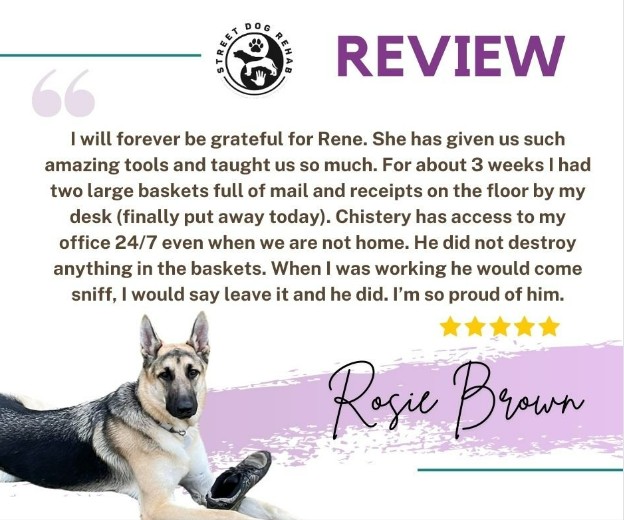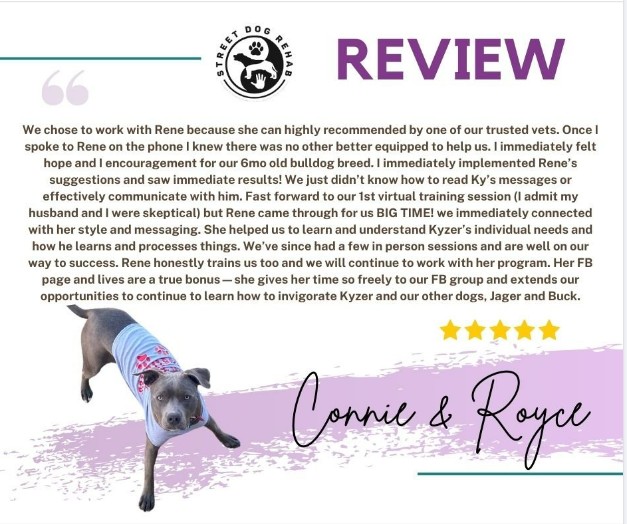We recently connected with Rene Smith and have shared our conversation below.
Rene, thanks for taking the time to share your stories with us today Is your team able to work remotely? If so, how have you made it work? What, if any, have been the pitfalls? What have been the non-obvious benefits?
A switch to remote work for my business has helped my business to thrive in several ways. Virtual dog behavior consulting is ideal for aggression and anxiety cases and has been the jump starter for building an active online community. The switch has been easier for me than most considering my preferred manner of communication is through audio messages and video feedback.
As a behavior consultant, I only accept cases of dogs with aggression and/or severe anxiety, many of whom have bitten people before. Virtual sessions are safer for the humans involved, and kinder to the dog – I can recall so many meetings where I had to end the session early since the dog was so distressed with a stranger just being present in their home. With remote meetings I can still effectively coach clients through training and ready body language without massive amounts of stress to the dog, which in turn means far less stress for the humans working with the dog.
The switch to virtual consulting has meant making some tweaks to how instructions are communicated and how cases progress, but in general it has been hugely beneficial for my business and my clients. They are able to learn body language more thoroughly, which helps them be more comfortable in real world situations, and handlers receive more feedback of their own training videos, which helps people see more clearly the adjustments they need to make and understand why and how the training is working on a deeper level.
In addition to the case work, the switch to remote consulting has allowed me to grow an active and fulfilling online community around my Facebook group, Human End of the Leash. Since the start of the pandemic, we have welcomed over 1000 new members, which allows me to reach an ever-expanding audience of people with information, as well as offer services worldwide.

Rene, love having you share your insights with us. Before we ask you more questions, maybe you can take a moment to introduce yourself to our readers who might have missed our earlier conversations?
I got started in the dog training and behavior field with goals to be a service dog trainer after retiring from the army. I took home just about every puppy someone said needed a home, until a fight broke out between several of the dogs one day. This fight pushed me to learn as much as I could about understanding and modifying canine aggression, which eventually led to a shift in my goals from becoming a service dog trainer to becoming an aggression specialist. As of 2021 I am a certified behavior consultant through the Certification Council for Professional Dog Trainers.
As an aggression specialist, I only accept cases of dogs who are exhibiting very large behaviors about the world around them, whether their reactions are toward other dogs, humans, or other. The vast majority of my cases consist of dogs resource guarding, exhibiting aggression toward humans, or dogs struggling with generalized anxiety. A good portion of them have a previous bite history as well. Most owners I work with are scared of their dog and at their wits end, and we work together virtually to set up management and resolve barking, lunging, biting and much more.
One of the most important things I want people who approach me to know is that I don’t care if they’re using training tools on their dogs currently, like prong collars or shock collars. Many trainers have shifted to a view where they will turn away anyone who uses these tools and shame them, instead of working with the owners to fade out the use of tools when the owner feels safe and comfortable enough to do so. I personally used to be someone who used training tools on nearly every dog and have shifted to a LIMA (Least Intrusive Minimally Invasive) approach where these tools are hardly, if ever used. Instead, we meet the dog’s needs with modifications to the environment or interactions, set up management, fulfill the dog with enrichment, and then start training specific behaviors.
The aspect I am most proud of related to my business is my community of online followers and clients in my Facebook group, Human End of the Leash. Most Facebook groups (dog training ones especially) will become derailed and allow for all sorts of negativity as they grow. Maintaining the group to remain a positive, supporting place to have discussions about dog training and different techniques has been difficult, but has resulted in a thriving group where people can be comfortable.


Learning and unlearning are both critical parts of growth – can you share a story of a time when you had to unlearn a lesson?
The biggest lesson I had to unlearn related to dog training and behavior (and life in general) is the notion that I needed to be in control all the time. Alpha theory is a prevalent body of thought and training techniques in the dog behavior world, one that almost every pet owner has heard of which equates dogs to wolves, and describes wolf pack hierarchy in an outdated, alpha controls everything sort of way. This theory leads to justification for using punishment like alpha rolls, corrections, and prong collars to suppress behavior since “wolves correct each other”.
When I started to learn more about canine aggression due to the pack fight between personal dogs, the first thing I had to do was unlearn the urge to suppress the aggressive behaviors. Behavior modification must teach new behaviors and new skills to a dog in order for the dog not to shut down or become unpredictable and more likely to react severely if they’re put in a situation they can’t handle. Approaching cases from a lense of teaching a dog to cope and finding alternative solutions for how the environment is being set up when someone comes in the home for example, made it feel as though there had suddenly been color added to a black and white world of suppression training.
Most positive reinforcement training still does not talk about the benefits of allowing dogs choices, especially around displays of aggression or situations where there is a potential for the dog to react, but I have found the more choice I provide to them and less control I demand to have over the dog, the more quickly the dog responds to the behavior interventions.
Can you share a story from your journey that illustrates your resilience?
As a neurodivergent individual (ADHD) and a single mom, starting my business was the easiest part. Maintaining my business is a constant exercise in resilience. ADHD makes decision making and keeping track of everything that is going on, from clients to other meetings to book keeping, plus I am constantly rearranging my work schedule to accommodate my children.
Two of the most notably difficult moments were both times when I had to step away from my business entirely in order to heal – once to have hip surgery where I was not working for almost a month, and more recently, when I was unable to work for over a week due to covid. Picking up work after extended leaves is always so stressful since I always feel like something has slipped through the cracks and business is slow for a significant time after. Thankfully I had a small community to help with the kids, dogs, and household tasks during these times.
Contact Info:
- Website: www.streetdogrehab.com
- Instagram: https://www.instagram.com/streetdogrehab/
- Facebook: https://www.facebook.com/profile.php?id=100053618148836
- Other: https://www.tiktok.com/@renesmith13?is_from_webapp=1&sender_device=pc


